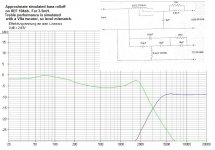Re post #69. The reason you don't bi-wire a series x-over (just assume a 1st order two way for the moment) is that, as I understand it, the amp will be presented with zero impedance* by the bass section at low frequencies and zero impedance by the tweeter section at high frequencies........
(* strictly speaking the DC resistance of the inductor and associated wiring which should be still be <1 ohm......)
I think that's the point others are making.
(* strictly speaking the DC resistance of the inductor and associated wiring which should be still be <1 ohm......)
I think that's the point others are making.
Maybe some of the forum users can give me their expeiences with series crossovers.
I think a lot of designers avoid series crossovers because the shared components make it difficult to compensate for the acoustic response of the drivers.
Driver tolerances have to be very close. Fried products started using then in the early 1980's. They require very high quality drivers.
Or the willingness to ignore frequency response.
They do sum flat when testing. Comparing parallel to series with the same speakers the series sounded more detailed and dynamic.
When the company switched from the parallel configuration to series only the layout changed. The same values were used.
The cutoff after the first octave is 12 db not 6 db as is in the parallel configuration.
When the company switched from the parallel configuration to series only the layout changed. The same values were used.
The cutoff after the first octave is 12 db not 6 db as is in the parallel configuration.
I think I'm becoming obsessed with this KEF Calinda crossover. It interests me, because 8" bass plus 1" tweeter is such a common design and I'm figuring what to do with mine.
To recap, here are the main T-S parameters for a KEF B200 SP1054 8" bextrene bass/mid (large magnet, low Q. n.b. Other B200 models had Qts around 0.45 and Le around 0.25mH):
Vas 130L
Qm 3.27
Qe 0.25
Qts 0.23
Le 0.45mH
Re 7.0R
Fs 25Hz
Main parameters for T27 SP1032:
Le 0.05mH
Fs 900-1100Hz
Re 5.2-5.6R
I've redrawn the schematic to reflect what we think it really was. And I've added some appropriate calculated Bafflestep and Zobel values for those who know about these things. So we've now got a bit of a cookbook if you allow for how they interact.
Simulated with multisim and... It is still wrong ... f-3 is 245Hz...
BUT I've just found this: kEF cALINDA lOUDSPEAKERS . You can read the dividing frequency is 3500Hz.
So, this is what I'm thinking:
-keep my b200 sp1054 (good midwoofer, isn't it?), rebuild the enclosure with 30-35 liters, tuning 45Hz;
-buy VifaXT19TD(or XT19NC?)
-use a 2nd order XO at 3kHz with zobel network...
OK?
many thanks
Yup, that calinda crossover just makes NO SENSE!Simulated with multisim and... It is still wrong ... f-3 is 245Hz...
BUT I've just found this: kEF cALINDA lOUDSPEAKERS . You can read the dividing frequency is 3500Hz.
So, this is what I'm thinking:
-keep my b200 sp1054 (good midwoofer, isn't it?), rebuild the enclosure with 30-35 liters, tuning 45Hz;
-buy VifaXT19TD(or XT19NC?)
-use a 2nd order XO at 3kHz with zobel network...
OK?
many thanks
You've got enough to go with now, I reckon. It's about 0.5mH and 5uF in the lowpass for 3500Hz. Adding a 6dB bafflestep needs a compensation increase in the shunt capacitor to 10uF. Which then makes you redesign the high pass. A 6 ohm resistor at the input for -6dB would change the high pass to symmetrical capacitors: LC Filter Design
Or you just pad the tweeter 6dB on the normal Highpass design for a third order butterworth.
Yup, that calinda crossover just makes NO SENSE!
Looks pretty much as i'd expect post KEF 104aB.
2nd order on the woofer, with a notch filter + 3rd order HF + their acoustic butterworth mod for the T27 tweeter.
http://p10hifi.net/planet10/TLS/downloads/Kef104abXO.pdf
dave
Simulated with multisim and... It is still wrong ... f-3 is 245Hz...
Hi,
Its not wrong, its probably right. You can't do acoustics in a circuit simulator.
Well you can, as long as you include acoustic modelling into the simulator.
That sounds plausible for the baffle step compensation section of the x/o.
rgds, sreten.
http://sites.google.com/site/undefinition/diy (see if nothing else, the excellent FAQs)
http://techtalk.parts-express.com/showthread.php?t=219617
http://www.zaphaudio.com
http://www.zaphaudio.com/ZA5/
http://www.rjbaudio.com/Audiofiles/FRDtools.html
http://web.archive.org/web/20090902124715/http://geocities.com/woove99/Spkrbldg/DesigningXO.htm
http://www.rjbaudio.com/
http://web.archive.org/web/20090902202231/http://geocities.com/woove99/Spkrbldg/
http://speakerdesignworks.com/
http://www.htguide.com/forum/showthread.php4?t=28655
http://www.deadwaxcafe.com/vzone/david/david.htm
http://www.troelsgravesen.dk/Diy_Loudspeaker_Projects.htm
http://www.humblehomemadehifi.com/download.html
http://www.quarter-wave.com/
http://www.frugal-horn.com/
http://www.linkwitzlab.com/
http://www.musicanddesign.com/
Great free SPICE Emulator : http://focus.ti.com/docs/toolsw/folders/print/tina-ti.html
Hi Sreten,
I know this is a bit off topic, but have you used both Tina-ti and LT-spice.
I currently use LT-Spice and wondered if it was worth changing.
Regards,
Andy
Hi,
I don't use simulators much, I play with them, I do have both and I
find TinaTi a lot easier but I know it a lot better than LT-Spice, which
TBH I've never been able to play with, and have barely touched it.
For a beginner I definitely say Tina-Ti, FWIW it was developed in
Poland I think as a teaching tool, it has some great features, and
friendly user interface, the best I've seen in a (free) simulator.
What I don't know are the limitations and the integration with
say layout tools, the extent of the libraries etc if your taking
it seriously, or the relative in depth features of both packages.
As I'm into speakers you've got to like a package that has an
impedance meter you can connect in place of an AC source.
rgds, sreten.
Last edited:
You guys have done THREE PAGES of off-topic and trolling here. You are too dumb to understand allpass networks and making terrible mistakes in understanding them. I have built and tested them with opamps, so I know what I'm talking about. In Rod Elliott's squarewave response the parallel network is connected out of phase, so inevitably gives a ropey step/squarewave response WHICH HE MENTIONS. Reversing the tweeter and aligning the levels will give identical response from series and parallel networks. Can we leave it there, and you guys STFU and get outta here? Sorry to rant. 
Back on-topic @ Planet_10. I looked up the simulation for the KEF 104ab which uses the lower inductance B200 SP1039. The bass rolloff isn't too bad, especially since it's been done for the bright midrange setting with 3.5mH.
Back on-topic @ Planet_10. I looked up the simulation for the KEF 104ab which uses the lower inductance B200 SP1039. The bass rolloff isn't too bad, especially since it's been done for the bright midrange setting with 3.5mH.
Attachments
FWIW, the current topic in this thread is helping michelino redesign his speakers around a KEF SP1054 bass unit. I am sure series crossovers are of great interest, they make you think about interaction between filters in a very clear way. But unless you will suggest a series crossover that will work for him, I think you will do well to stop trashing this thread with digressions. The flame war with sreten is rather depressing too.
Start or revive a thread on series crossovers if you want. I would find that interesting myself, but here you are off-topic. The KEF crossovers are really quite interesting, and that is where we are at the moment. It's interesting that if you add the 0.3mH speaker inductance in the 104ab to the 0.6mH coil, you get the classic 3:1 inductor ratio of the third order butterworth LP. The KEF designers are doing elegant stuff here and seem to know the B200 rather well.
Start or revive a thread on series crossovers if you want. I would find that interesting myself, but here you are off-topic. The KEF crossovers are really quite interesting, and that is where we are at the moment. It's interesting that if you add the 0.3mH speaker inductance in the 104ab to the 0.6mH coil, you get the classic 3:1 inductor ratio of the third order butterworth LP. The KEF designers are doing elegant stuff here and seem to know the B200 rather well.
Off-topic here... http://www.diyaudio.com/forums/multi-way/206843-sreten-speakerman-go-series-xos.html
dave
dave

TINA is from a Hungarian university academic as far as I know.
(University guys form start-ups there as well as here in the UK it seems.
Hi,
It was. But Texas bought them out and the basic version is free.
rgds, sreten.
Still off-topic, Sreten. When are you going to GET IT?Hi,
It was. But Texas bought them out and the basic version is free.
rgds, sreten.
Michelino, I've been looking at that B200 SP1054 a bit. 7 ohms Re. Le 0.45mH. For a 10" wide cabinet, your 6dB bafflestep (aka bass boost) is 2.4mH in parallel with 7 ohms. Unsurprisingly close to the KEF 2.7mH.
Loudspeaker Diffraction Loss and Baffle Step Compensation Circuits
I'd then try this third order butterworth on the bass with -3dB @ 2500Hz after the 7 ohm resistor: 0.45mH, 18uF and use the 0.45mH B200 inductance itself as the third term. So it's really electrically the 7 ohm resistor, one inductance and one capacitor to fit.
A modern 6 ohm tweeter with an Fs of around 600-800 Hz ought to be able to cope with a crossover @2500Hz. So the tweeter crossover is 6 ohms, 10uF, 0.2mH and 10uF in 3rd order B/W highpass. The six ohm resistor gives you a slightly different calculation that you can check here:
LC Filter Design
An elegant circuit that ought not to be too far off. I expect a Zobel on the tweet would be good. Impedance Equalization (L-Pad) Circuit Designer / Calculator
Worth trying with non-polar electrolytics before investing in the final circuit.
Various Questions arround the B200 Versions
1) What means the specification number "SP-10xx" (nomenclature of that number) ?
in the attachment some examples of various B200 versions
2) I have heard, there is a special company in UK, that is able to resurrect all B200 (and B110) versions with damaged voice coil (i. e. overpass in the genuine and new condition).
I want to know this company.
Thank you for advices.
1) What means the specification number "SP-10xx" (nomenclature of that number) ?
in the attachment some examples of various B200 versions
2) I have heard, there is a special company in UK, that is able to resurrect all B200 (and B110) versions with damaged voice coil (i. e. overpass in the genuine and new condition).
I want to know this company.
Thank you for advices.
Attachments
-
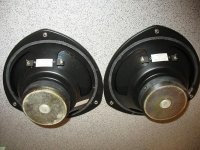 B200 SP1075.jpg58.1 KB · Views: 237
B200 SP1075.jpg58.1 KB · Views: 237 -
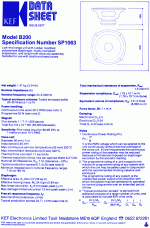 B200 SP1063.gif61.7 KB · Views: 164
B200 SP1063.gif61.7 KB · Views: 164 -
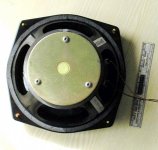 B200 SP1054.jpg31.2 KB · Views: 175
B200 SP1054.jpg31.2 KB · Views: 175 -
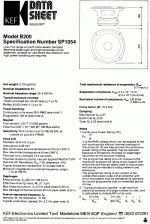 B200 SP1054.gif47.9 KB · Views: 144
B200 SP1054.gif47.9 KB · Views: 144 -
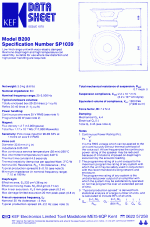 B200 SP1039.gif56.5 KB · Views: 141
B200 SP1039.gif56.5 KB · Views: 141 -
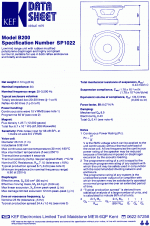 B200 SP1022.gif57.3 KB · Views: 289
B200 SP1022.gif57.3 KB · Views: 289 -
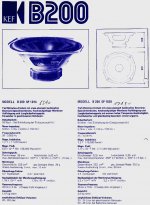 B200 SP1014+SP1039 German.jpg94 KB · Views: 352
B200 SP1014+SP1039 German.jpg94 KB · Views: 352 -
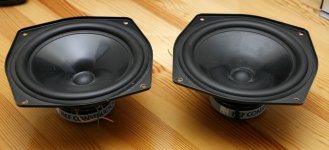 B200 SP1014.jpg160.9 KB · Views: 292
B200 SP1014.jpg160.9 KB · Views: 292 -
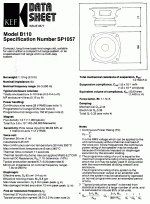 B110_SP1057.gif149.6 KB · Views: 416
B110_SP1057.gif149.6 KB · Views: 416 -
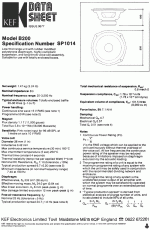 B200 SP1014.gif50.1 KB · Views: 128
B200 SP1014.gif50.1 KB · Views: 128
- Status
- This old topic is closed. If you want to reopen this topic, contact a moderator using the "Report Post" button.
- Home
- Loudspeakers
- Multi-Way
- B200 Kef Drivers
